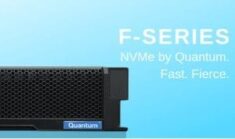How’s Your NVMe?
CMMA BlogWith so many technologies touting faster speeds, NVMe is surely top of mind for many who are trying to determine its advantages. You may already have been using it for quite some time in your personal devices like a laptop or tablet, and only now looking at it to help meet the demands of the performance-intensive workloads in your datacenter. And of course, NVMe will certainly do that. In fact, NVMe can provide performance that’s orders of magnitude faster than traditional flash storage. NVMe is perhaps the hottest storage technology right now, and for good reason.
Another advantage that you may not yet be aware of, is how it can help save infrastructure costs. How is that? For shared storage environments where direct user access to data is needed, you have some choices. NVMe not only supports Fibre Channel but also Ethernet. We’re all familiar with FC-SANs. And we’re very comfortable with that technology since it became more broadly integrated in the late ‘90s. That’s the 1990s, as in the previous century! And Fibre Channel is still well-used and beneficial in many use cases, and that’s a credit to that networking technology.
However, the
other option covered here is Ethernet – and this networking topology creates
the possibility for a new frontier. One in which high-throughput, low-latency,
and lower costs can all be reaped.
And especially when the NVMe storage system needs to be shared and connected to the outside, that’s when things can become really interesting, and really fast!
This is where incorporating RDMA (Remote Direct Memory Access) into the architecture comes in. RDMA is a game-changer by providing predictable, ultra-fast network performance. The key is that RDMA provides direct access between clients and remote NVMe storage devices, without going through the network stack or CPU. This translates into real gains in performance and reduced latencies.
The benefit? RDMA networking technology
can deliver SAN speeds over a less expensive ethernet network
infrastructure.
If this sounds interesting to you, and you’d like to learn more about how to meet the increasing demands of shared workloads at scale, check out our ‘NVMe, RDMA and Other Emerging Technologies ’ White Paper. This is a technical primer that provides information about shared storage with NVMe, workloads that are a good fit, along with topology comparisons and RDMA options. And it all starts with NVMe based storage, which increasingly serves as primary storage in many-tiered storage applications where real-time requirements exist.
Quantum’s F-Series NVMe storage servers were designed for the highest-performance workloads with the highest availability requirements. Visit our Quantum F-Series NVMe Storage page to learn more about how Quantum is enabling customers to process higher-resolution content with screaming fast performance, while at the same time reducing both storage and network infrastructure complexity and costs. Taking the first steps today by beginning to integrate faster technologies will give you the leap needed to keep up with productivity and a competitive edge within your industry.

 Watershed moments. Nearly every person, company, industry, and nation will have a handful over the course of their history. Some, like walking on the moon, involve whole nations and have the ability to influence the future of the entire world. Others can be more personal, such as achieving a life-long dream, that only affects the individual and their first-degree connections…
Watershed moments. Nearly every person, company, industry, and nation will have a handful over the course of their history. Some, like walking on the moon, involve whole nations and have the ability to influence the future of the entire world. Others can be more personal, such as achieving a life-long dream, that only affects the individual and their first-degree connections… What exactly is NVMe? NVMe stands for non-volatile memory express and is a new protocol designed to work specifically with Flash storage, so it’s incredibly fast and efficient. Most flash storage devices and flash arrays use older interfaces that were originally created for hard drives, like SAS and SATA. When NVMe was created, it was […]
What exactly is NVMe? NVMe stands for non-volatile memory express and is a new protocol designed to work specifically with Flash storage, so it’s incredibly fast and efficient. Most flash storage devices and flash arrays use older interfaces that were originally created for hard drives, like SAS and SATA. When NVMe was created, it was […]